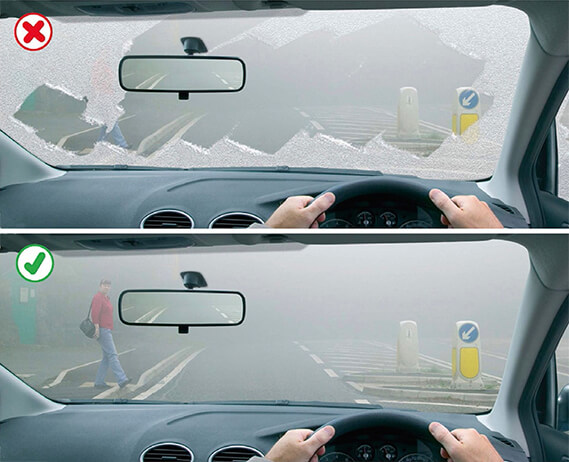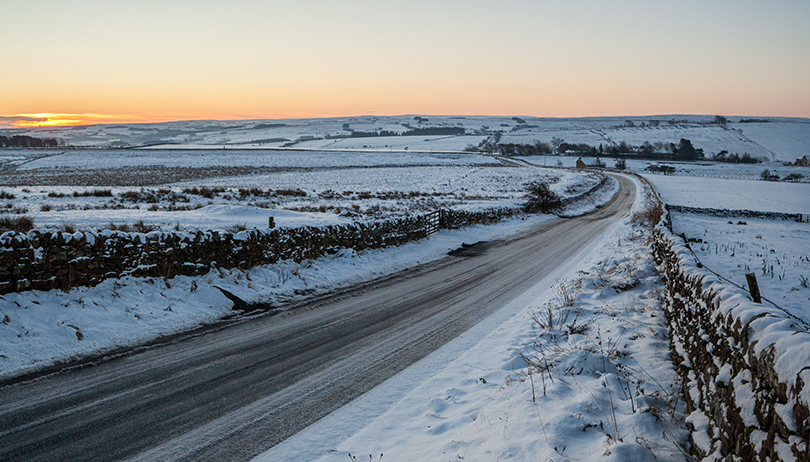If you’re new to driving or a nervous driver, then winter driving on icy rural roads might feel incredibly intimidating. However, equipped with our advice, you will be able to confidently tackle driving safely during the winter months.
If you’re an experienced driver, but you’re not 100% confident, then you can take a refresher lesson specifically for winter driving at our driving school in Birmingham.
Below we’ve provided some important tips and tricks when it comes to driving on ice during the winter months.
Preparing to drive on icy roads
First, make sure you have an emergency kit in the car. Endsleigh suggests your phone is fully charged, and you have a de-icer, scraper, torch, first aid kit, shovel, jump leads, blankets, warm clothing and boots, emergency food and warm drinks.
Next, make sure your vehicle is prepared for winter driving.
The Highway Code explains that your vehicle must be clearly visible to other drivers, and you must not have anything obstructing vision for safe winter driving.
Before driving on icy roads, here are some things to check:
- Clear all the ice from the windows
- Clean the mirrors
- Defog the windows
- Confirm headlights, high beams and brake lights are working
- Wipe your number plate clear of snow and ice

How to recognise icy conditions before driving
Learning how to recognise that you are driving on icy roads is the first step to safe winter driving.
When getting into your car look at your surroundings. Is there ice around the car park or on your vehicle? Taking the time to slow down and notice ice might save your life.
Roads can be especially dangerous as ice is beginning to freeze or just thawing out, the combination of water and ice will result in a similar effect to aquaplaning. Try to avoid driving as temperatures are dangling around the freezing mark as ice will be thawing and freezing.
What is black ice?
Black ice can affect all drivers, which is why it is important to slow down and pay attention when driving in possibly icy conditions.
The RAC describes black ice as a thin and transparent layer of ice on the road that looks just like the normal asphalt. If you are unable to hear the tyres, but the roads look visibly wet, and the temperatures are below freezing, then you are probably driving on black ice.
Black ice is most common when driving on rural roads with a low traffic volume. If you find yourself on these roads in freezing temperatures, then you must slow down.
If you hit black ice, don’t panic.
Try to avoid moving the steering wheel, but maintain a firm yet gentle grip on the wheel. Do not hit the brakes at any point. You can use the gears to slow down but do so gently.
How to drive on icy roads
How to brake on ice
When driving on ice, it is important to remember that when you brake, you will need to give yourself a stopping distance of 10 times your normal distance, and you need to allow a wide gap between yourself and other cars on the road.
If you’re driving an automatic vehicle, then this means you need to begin braking much earlier than you normally would, in order to come to a complete stop.
If you’re driving a manual vehicle, then you should change your gears earlier than normal to allow for speed to fall naturally and only use the brakes to gently come to a stop.
If you find yourself needing to use brakes on ice, then gently tap the brakes repeatedly.
How to correct a skid on ice
If you find yourself skidding on icy roads, then you need to steer gently into the direction your vehicle is skidding.
If the boot of your vehicle is sliding to the right, then gently steer with the vehicle to the right. Never brake, and never take your hands off the steering wheel.
How to corner on ice
Driving on rural roads can be incredibly fun as you corner through all the bends, but when winter driving it can be very dangerous.
If you can time your turn perfectly and drive at a steady speed in your highest gear, then you will not have to use brakes on a bend. When you don’t use brakes, you avoid the risk of skidding on ice or losing control of the vehicle.
Be gentle with the accelerator, don’t use the clutch if possible, steer smoothly, and avoid braking on the bend.
Still feeling nervous about winter driving?
When in doubt remember: drive slowly, keep your hands on the wheel, avoid braking, and gently switch gears.
If you’re still feeling nervous about driving on icy rural roads, then our driving school in Birmingham offers several different courses to ensure you feel safe and confident driving during the winter.
We offer lessons for new drivers and experienced drivers needing refresher courses.
Book your free taster lesson with us today.
